Dikeou Superstars: Johannes Vanderbeek
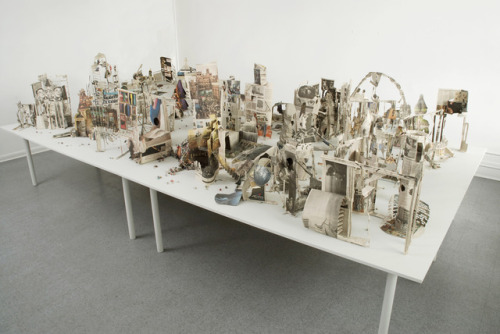
Statistics show that people tend to look at a work of art at a gallery or museum for 15 to 20 seconds. Johannes Vanderbeek’s Newspaper Ruined at Dikeou Collection is a highly complex sculpture that draws viewers in to look closer, and longer, than the average 15 to 20 seconds, and rewards those with an attention to detail with its trove of hidden metaphor. Originally exhibited at MoMA PS1 as Newspaper Ruins in 2005 and subsequently recreated as Newspaper Ruined in 2008, the sculpture functions like a time capsule from the year it was created. Each structure within the expansive newspaper city is made with a single sheet of The New York Times, highlighting the headlines, trends, and events of that particular day. The array of articles, photos, letters, and advertisements makes each edition of The New York Times a fascinating object to behold. With Newspaper Ruined Vanderbeek brings these disparate clippings together to create a unified vision of a fantastical world where global political leaders, fashion models, top athletes, movie stars and small town folk coexist.
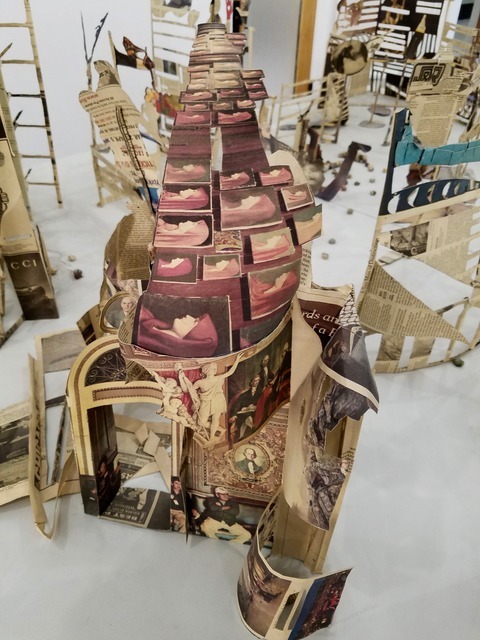
Newspaper Ruined is full of visual metaphorical relationships that are clever, poignant, and delightful. On January 5, 2008 , Roberta Smith reviewed Dia Art Foundation’s presentation of artist Francis Alÿs’ collection of St. Fabiola portraits at the Hispanic Society of America. Vanderbeek incorporated the image from the article into one of the structures of the newspaper city, utilizing the dramatic one-point perspective shot of Alÿs’ installation as the crown of an art temple of sorts with Neoclassical sculptures and historical paintings below.
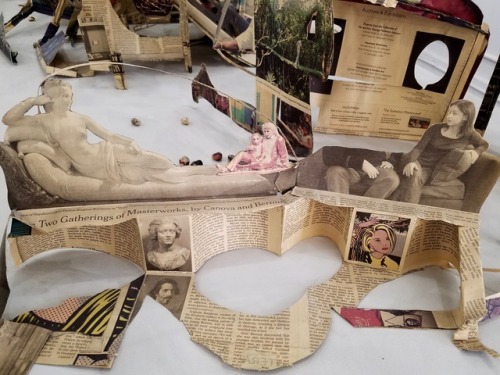
Antonio Canova’s marble statue of Napoleon’s sister Paolina Borghese Bonaparte as Venus Victorious, which appeared in a January 8, 2008 article by Roderick Conway Morris, reclines with Jeff Koons’ Michael and Bubbles and filmmaker Lizzie Gottlieb. These once unrelated subjects now lounge as a lifelong trio.
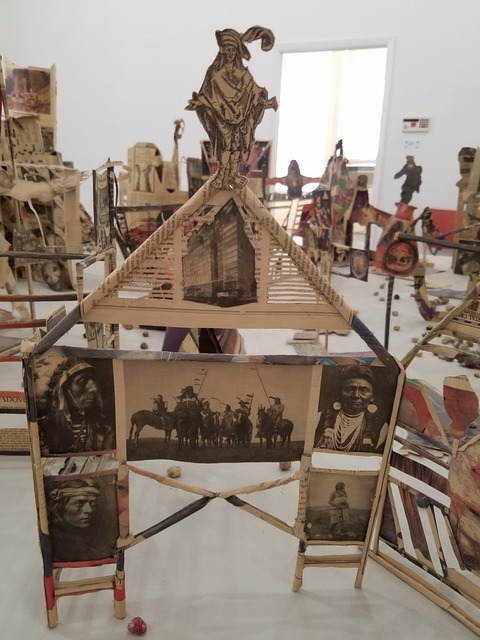
There have been numerous instances where I have encountered visitors ruminating over Newspaper Ruined and are so eager to share their thoughts and discoveries. There is much I have learned about this work through the eyes of others, especially children. When I give tours to elementary school students I like to initiate a game of “I spy with my little eye…”. Given that they are much smaller and see the work from a lower eye level, they are able to notice things that adults tend to overlook, thus adding to the story of the piece.
Vanderbeek’s generation of meaning between seemingly unrelated subjects is like a contemporary version of Aby Warburg’s Mnemosyne Atlas constructed into three-dimensional form. “Begun in 1924 and left unfinished at the time of his death in 1929, the Mnemosyne Atlas is Aby Warburg’s attempt to map the ‘afterlife of antiquity,’ or how images of great symbolic, intellectual, and emotional power emerge in Western antiquity and then reappear and are reanimated in the art and cosmology of later times and places, from Alexandrian Greece to Weimar Germany… Warburg hoped that the Mnemosyne Atlas would allow its spectators to experience for themselves the ‘polarities’ that riddle culture and thought.”
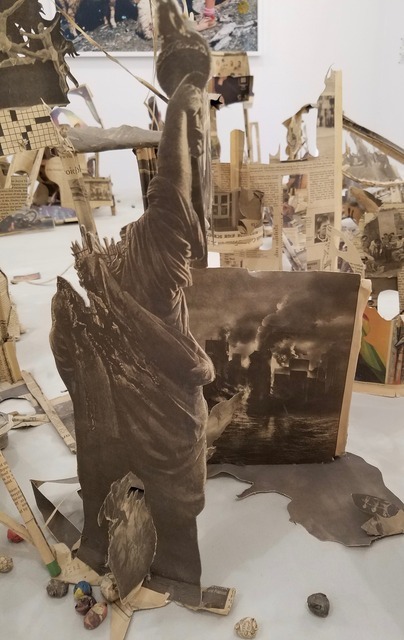
Warburg’s atlas existed as black-clothed wooden panels pinned with images from newspapers, books, magazines, and other ephemera and were arranged thematically. Some of the structures in Newspaper Ruined have strong themes related to culture, politics, and nature, but most are left open to interpretation. It is as if the work is a hyper-condensed version of our real global society, where there is a balance between the objective and the subjective. And, as in the real world, the sculpture is fragile and prone to decay but can always rebuild.
- Hayley Richardson
